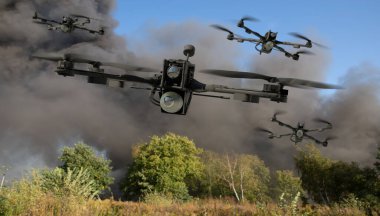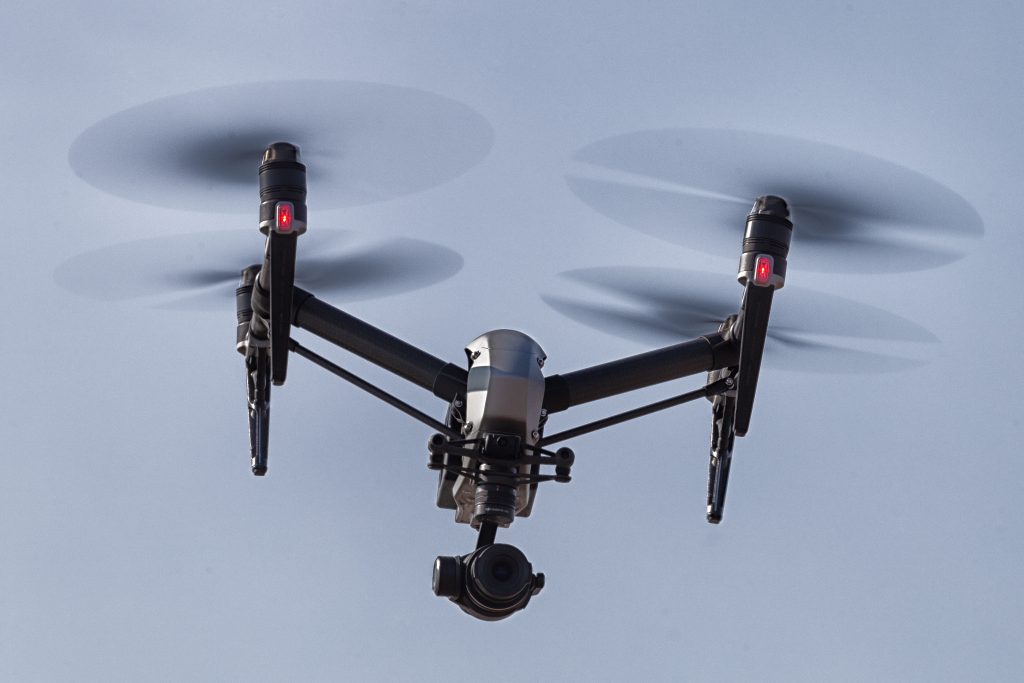
“Ukraine’s drone swarms downed 34 percent of Russia’s strategic cruise missile–equipped bomber fleet in a single night.” That number, verified by President Volodymyr Zelensky and Ukrainian spymasters, represents a paradigm shift in modern warfare—one in which low-cost, high-impact technology can upend years of military doctrine. The June 2025 strikes, an operation of Ukraine’s Operation Spider’s Web, have not only unsettled Russian military strategists but also caught the imagination of analysts across the globe, marking a new phase of asymmetric warfare. For the enthusiasts of military technology and conflict analysis, these occurrences provide insight into the changing dynamic of drone warfare, industrial mobilization, and the dynamic balance of power on the field of battle. Here are eight important ways Ukraine’s recent military operations and industrial breakthroughs are reshaping the war—and the future of military tactics.

1. Drone Swarms Cut Deep into Russian Territory
The June 1, 2025, drone attacks are a turning point in the war. Ukraine’s Security Service (SBU) coordinated the secret delivery and deployment of 117 first-person view (FPV) drones from commercial vehicles stationed close to four Russian airbases. This strategy permitted Ukrainian commanders to evade Russian electronic warfare capabilities and hit with precision, destroying or disabling a minimum of 41 aircraft, among which were Tu-95 and Tu-22M3 bombers and A-50U airborne warning aircraft. The action caused an estimated $7 billion worth of damage, reported SBU sources, and compelled Russian air defenses to rethink their coverage across enormous expanses of real estate. The deployment of commercial aircraft for drone launches, with close-in deployment, speaks to Ukraine’s innovative capability under stress and the achievement of operational surprise.

2. Strategic Targeting: Disabling Russia’s Military Infrastructure
Recent Ukrainian attacks have targeted infrastructure that supports Russia’s long-range strike capabilities. Progress defense plant in Michurinsk, a primary producer of high-precision electronic parts for missile and artillery systems, was targeted for its contribution to Russia’s continuation of serial production of the Hyacinth, Msta, Tornado, and Iskander systems. As described by Andriy Kovalenko, Head of Ukraine’s Center for Countering Disinformation, a successful attack on this plant would greatly hinder Russia’s capacity to replenish its weapons stockpile. Concurrent strikes against the Engels oil facility and Dyagilevo air base further demonstrate an intentional campaign to drain Russia’s ability for prolonged offensive operations.

3. Russian Production Machine: Scale and Weaknesses
Russia’s defense industry has shifted into overdrive, with factories running around the clock and producing over 1.3 million artillery shells and 500+ cruise missiles annually by 2024. The Kremlin’s strategy, as detailed in a Royal United Services Institute (RUSI) analysis, is to outlast Ukraine and its Western backers through sheer volume. Yet, this approach has its limits. Despite the surge, Russia is increasingly reliant on refurbishing older tanks and importing ammunition from Iran and North Korea. The cost of this mobilization is steep, with the government diverting funds from civilian sectors and forcing banks to shoulder half the war’s expenses. While the short-term impact is undeniable, these choices may undermine Russia’s economic stability in the long run.

4. Ukraine’s Wartime Industrial Renaissance
Against the odds, Ukraine has swiftly developed a domestic weapons industry to meet half of the country’s military ammunition demand by late 2024. Drawing on its Soviet-era industrial base and a spate of wartime innovations, Ukraine now manufactures Soviet- and NATO-caliber shells, heavy weapons, as well as more than 100,000 drones per month. This shift is not just quantitative. Ukrainian firms have pioneered cost-effective solutions, such as the “Sky Fortress” acoustic sensor network, and have demonstrated the ability to deliver complex systems like the Bohdan 155-mm self-propelled howitzer faster than many Western manufacturers. As RUSI’s report notes, Ukraine’s agility and cost-efficiency have made it an unexpected arsenal for itself and its allies.

5. Asymmetric Airpower: The New Drone Doctrine
The June drone strikes showcased the maturation of Ukraine’s doctrine for asymmetric airpower. Instead of depending on pricey, high-end platforms, Ukraine used swarms of low-cost, AI-powered drones to create strategic impacts. These drones flew independently, using visual means to detect and hit targets without human operator control—a degree of automation that military strategist T.X. Hammes foresaw would transform war. The consequence is an “air littoral” in which conventional air superiority no longer provides assurance, and even best-protected assets are open to sustained, low-altitude attack.

6. Russian Air Defense: S-400s and the Limits of Layered Protection
Notwithstanding its hype around being one of the world’s most sophisticated air defense systems, Russia’s S-400 Triumf has taken heavy losses in Ukraine. At least 31 S-400 batteries have been destroyed or incapacitated, frequently by older Western missiles or creative Ukrainian tactics. Experts like the Hague Center for Strategic Studies’ Fredrik Mertens observe that the vulnerabilities of the S-400 arise out of vulnerabilities in Russia’s multi-layered defense network and the system’s inability to engage ballistic and cruise missiles. As RAND’s John Hoehn notes, Ukraine’s methodical strategy—mixing deception, mobility, and electronic warfare—has incessantly unraveled Russia’s most valued defenses, providing instructive lessons for NATO and its allies.

7. Industrial Partnerships: Ukraine as a Security Exporter
Ukraine’s emergence as a defense producer is altering the strategic equation in Europe. Western powers, seeing Ukraine’s quickness and efficiency, are increasingly investing in production of Ukrainian-designed weapons for both Ukrainian and European consumers. Denmark’s funding of Bohdan howitzers and Lithuania’s investment in long-range drones are early instances of a larger trend. As NATO Secretary General Jens Stoltenberg has noted, integrating Ukrainian industry into the European defense value chain could strengthen NATO’s resilience and decrease dependence on glacial Western procurement systems.

8. The Psychological and Doctrinal Impact on Russia
The repeated efficacy of Ukrainian drone attacks has set off a crisis of confidence among Russian military leaders. High-ranking Russian officials and prominent milbloggers alike have berated leadership for its inability to defend strategic assets, with some going so far as to reference Russia’s nuclear doctrine as a response to the perceived threat. Though the Kremlin’s nuclear sabre-rattling is generally perceived as a threat designed to discourage additional Western assistance for Ukraine, the actual effect is psychological—compelling Russia to spread its air defenses, reconsider its storage methods, and grapple with the limitations of its conventional military doctrines. As one Russian State Duma Deputy brutally put it, the strikes have revealed a weakness that geography alone can no longer cover.

The June 2025 events highlight a fundamental change in the dynamics of war—a world where industrial might, technological development, and responsive strategy can trump raw power. Ukraine’s industrial mobilization and drone campaigns have not only pushed back against the Russian military force but have realigned what is achievable by smaller powers confronting larger foes. For their analysts and enthusiasts, they present a compelling case study in how the future of conflict will be determined as much by industry and ingenuity as firepower on the front lines.

